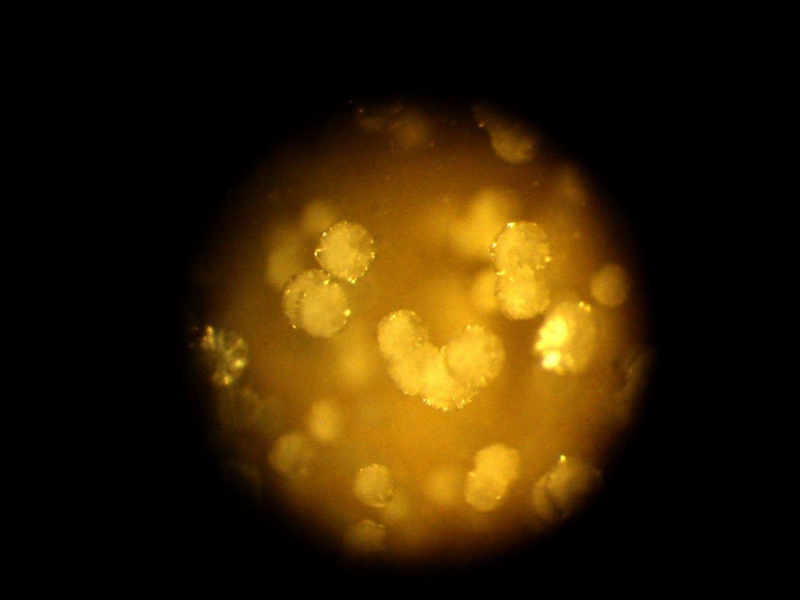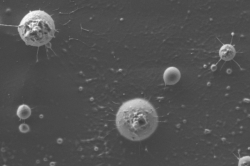Hematite is one of the most wide-spread minerals of iron. It can be found in nature in the form of reddish ore. That’s why it’s called hematite – it stands for “bloodred” in Greek. Its chemical formula is Fe2O3.
Separate crystals of this mineral look black to the naked eye. However, if they were grown in a glass matrix, the resulting material will be transparent but also attracted to magnets, almost like iron.
In the picture taken through a microscope, you can see separate hematite crystals evenly spread in glass.
Initially, hematite crystals are rhombus-shaped, but if they were grown in glass, they get together and form spherical structures. They are yellow in the picture because trivalent iron, which is a part of those crystals, absorbs all colors with wavelength shorter than that of yellow light.
Magnetic glass based on hematite was created by ITMO University’s Research Center for Optical Material Engineering as part of Russian Foundation for Basic Research’s project №18-33-00780.
As of now, the project is about fundamental research. Its main task is to expand conventional ideas about glass and create a magnetic material out of something that initially had nothing to do with magnets. If scientists accomplish it, then it will be possible to create conductive glass or even glass that can be used for data encryption.





